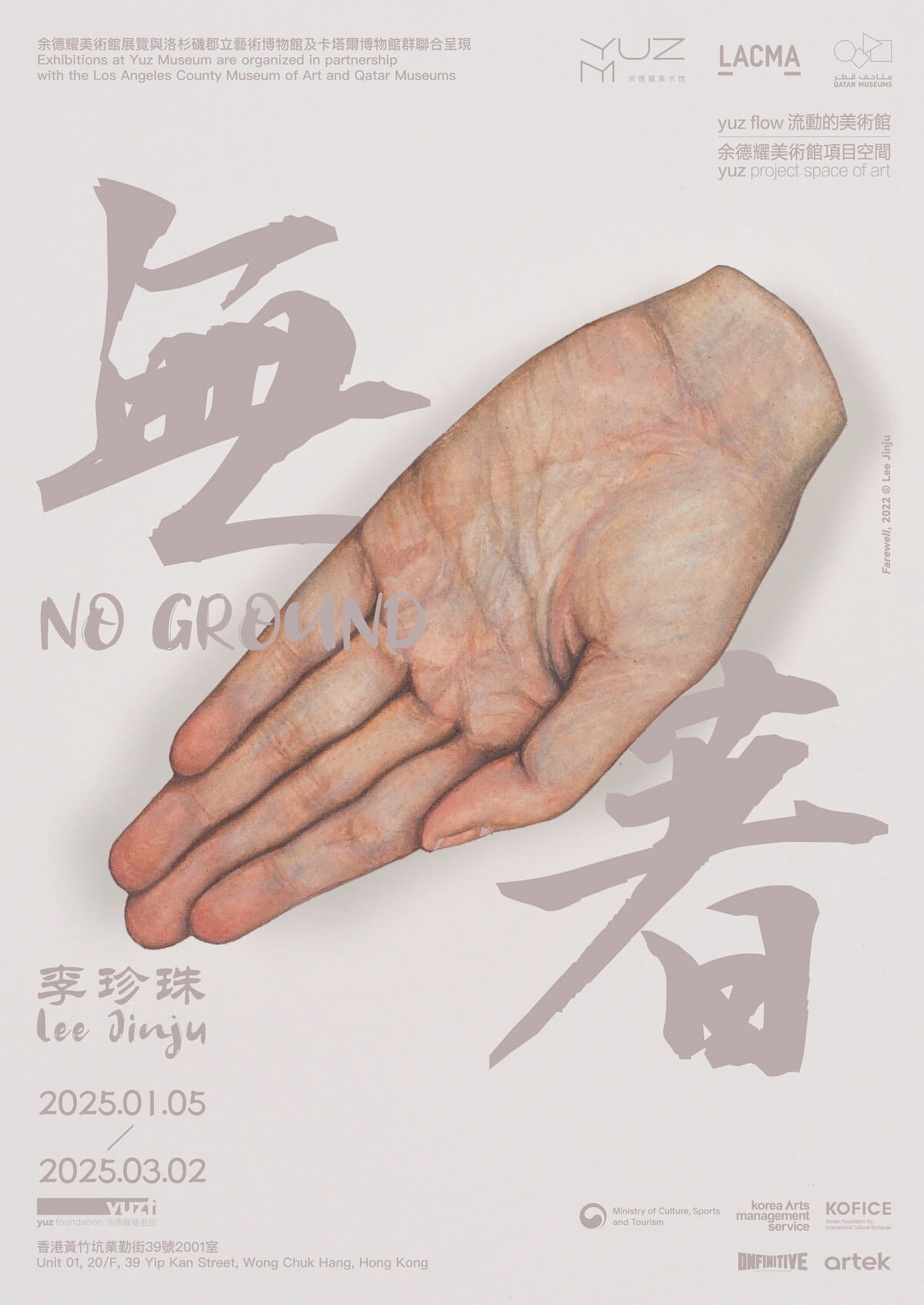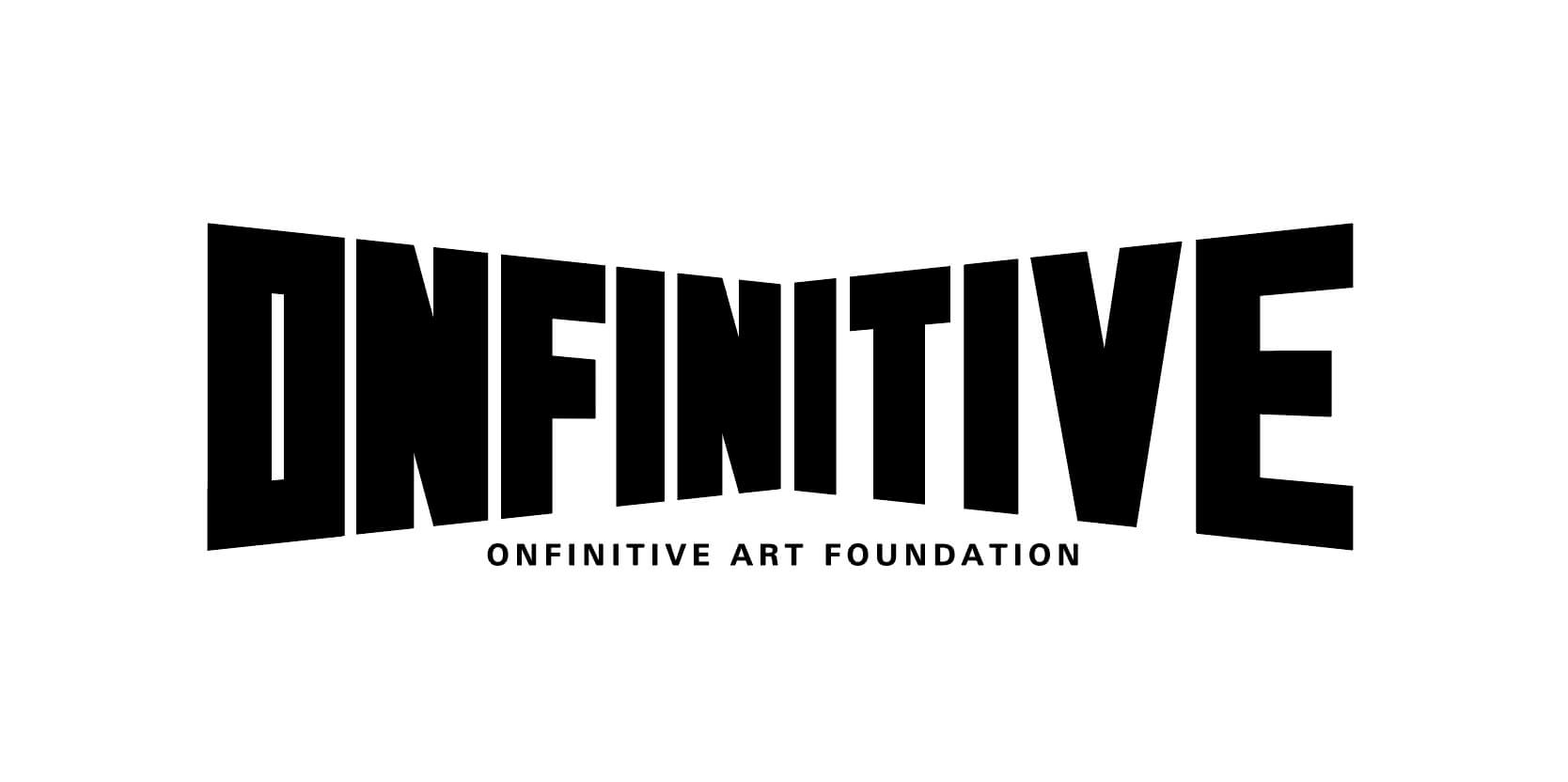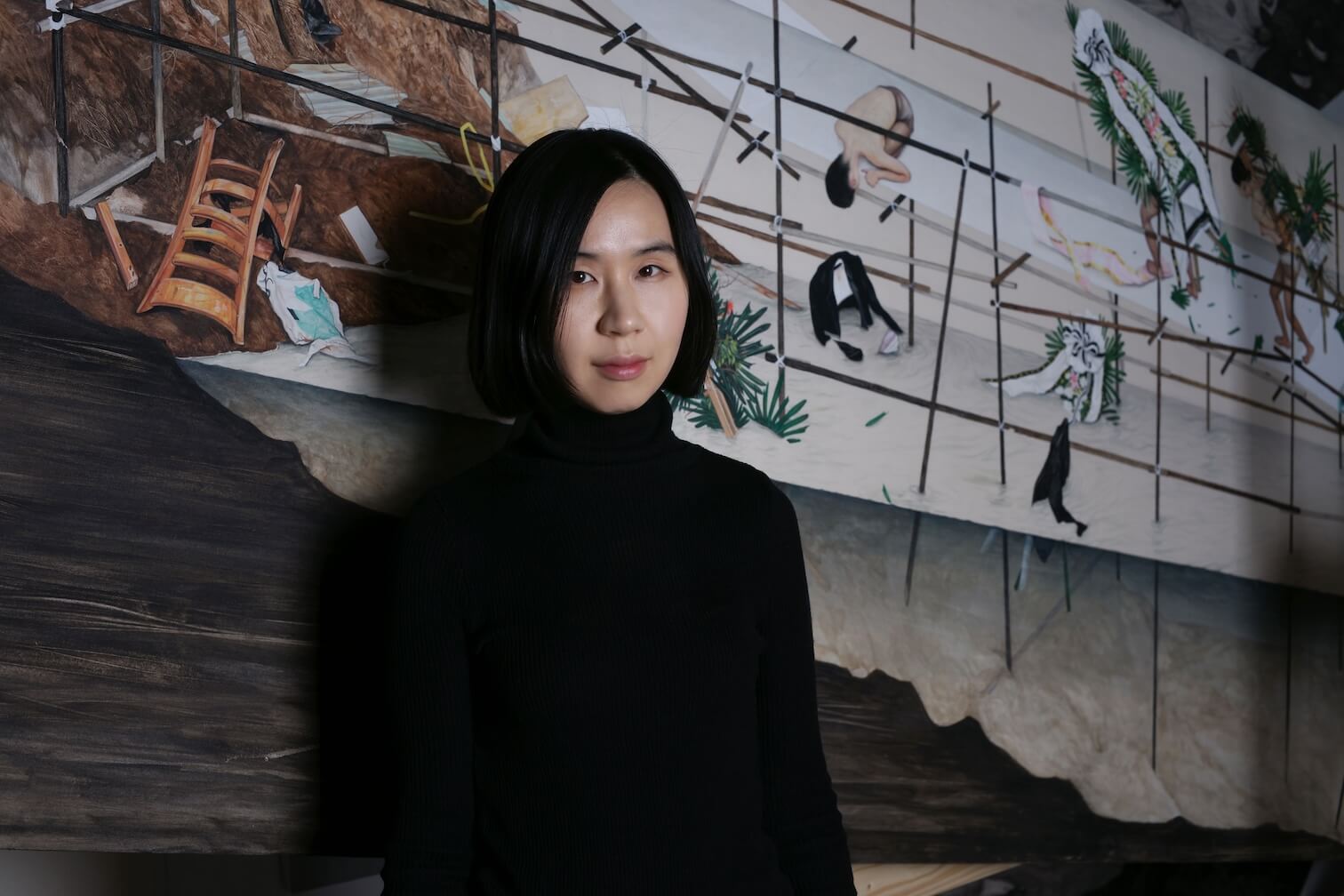LEE Jinju: No Ground
Jan. 5, 2025 – Mar. 2, 2025
Yuz Project Space of Art
Unit 01, 20/F, 39 Yip Kan Street, Wong Chuk Hang, Hong Kong

YUZ Museum will stage the first solo exhibition of the Korean artist Lee Jinju in Hong Kong, acclaimed for her delicate East-Asian style paintings, featuring 23 new works representing signature serieses of the Black Painting, Painting-Installation, and the Large Panoramic Landscape. This marks the first Yuz Mu-seum’s exhibition in Hong Kong as part of the “YUZ FLOW” initiative.
“No Ground” describes situations that cannot be verbalized, the abyss, the indistin-guishable night, and the collection of these concepts. All 25 artworks are about observ-ing the world as it is, leaving blank spaces for imagination and contemplation, and un-folding the subjective world of the artist as visible forms. A four-meter-long large pano-ramic landscape painting, No Ground (2024) presents the artist’s latest development, inheriting traditional “hyeonggwon” (scroll). It invites the viewer to move physically while appreciating the work, actively engaging with the art. The highly realistic and del-icate depiction encourages the audience to view the painting up close, moving along the direction of the painting, reading its story, or constructing their own narrative.
This approach of shifting scenes with each step is reminiscent of multiple perspectives from traditional long paintings in East Asian art as a reality synthesized with infinite perspectives. The painting shows segmented scenes but continuously connects different times and spaces without boundaries. By extending the canvas, the artist aims to max-imize the temporality of the painting.
Lee Jinju’s unique technique involves the careful construction of figures, techniques, and spatial relationships. This is achieved through paintings and installations that metic-ulously balance the concealment and the revelation, and the real and the illusory. She dialectically unfolds and conceals her sincere sensations and thoughts towards past ex-periences, memories, and the surrounding world, intriguing the viewer to notice con-cealed disappearance.
8 pieces of Visible (2024) and 10 pieces of Composed of Events, Not Things (2024) are two new works under Lee’s signature series, the Black Painting. Together with her hus-band, Lee Jeongbae, who is also an artist, Lee invented a handmade paint, “Lee Jeong-bae Black,” by combining a water-based colored powder pigment and a highly transpar-ent glue, resulting in a very dark, matte, velvet-like texture and dense blackness. The black void, therefore, obtains a magnetic attraction, represents the possibilities of infinite events within the darkness, and acts as protagonist equally with fragmented hands, whithered leaves, and burning papers. Black Void is Lee’s alternative blank space.
Using the exhibition space as extended blank space is another important initiative of the artist in her other vital series, Painting Installation. Midsummer (2024) and Next Season (2024) are under the White Veil and the Shaped Canvas series; (Im)possible (2024) is under the Double-sided Painting series, and Farewell (2022) and Your Tears(2022) are under the Sculptural Paintings of Hands and Faces series. Lee embodies blank spaces within an exhibition hall’s three-dimensional ‘space’ and the ‘now’ moment when the artwork is physically encountered. In a theatrical context, the curtain rises and falls at the boundaries of a story. In these two-dimensional paintings, the veil’s form attaches to the painting installations’ materiality, creating another boundary in the relationship be-tween painting and space.
Gender awareness significantly influences Lee Jinju’s artistic activities. Most of the fig-ures in her paintings are women, serving as both the artist’s psychological and anony-mous self-portraits. Her body of work, which started with intensely personal stories, includes many painterly symbols that emerged from the unique awareness and experi-ences of being a woman. These figures advocate for the theme of ‘being able to see,’ emphasizing corporeality, sensation, perception, and subjective interpretation to go be-yond what one sees with one’s eyes. Lee thrives on capturing the genuine nature of the world with painting, shouldering a classic mission as an artist.
Lee Jinju said: “I’m pleased to have my first solo exhibition in Hong Kong. I hope you are interested and supportive. While the forms depicted in my works are highly realistic, I encourage you to think beyond their meanings. I hope you carefully explore and enjoy the indescribable and nameless possibilities they represent.”

* We express our gratitude to the ONFINITIVE ART FOUNDATION for their sup-port in providing the venue for this exhibition.
About LEE Jinju

LEE Jinju (b. 1980, lives and works in Paju and Seoul, Korea) is an artist deeply rooted in the tradition of East Asian painting, both as an undergraduate and graduate student. Her work employs traditional water-based materials and highly realistic techniques, blending them with an uncanny narrative that both reveals and conceals its subjects. LEE’s paintings synthesize multiple times and spaces through a subjective perspective, seamlessly integrating them into cohesive compositions. Her works are characterized by delicate textures reminiscent of the precise detail found in Joseon Dynasty portraiture, yet they shift the focus towards the unique corporeality and inner life of women. Central to her paintings are faces with ambiguous expressions and hands that often cover, rather than reveal—these elements serve as vital protagonists, functioning as expressive and poetic symbols. In her “Black Paintings” series, LEE employs a specially handmade, light-absorbing black pigment to create a profound sense of depth, with fragmented subjects emerging from the darkness. Her “Shaped Canvases” including her large pano-ramic landscapes explore physical surroundings as blank spaces, drawing from the tra-ditional long scrolls’ multiple perspectives. These works invite viewers to imagine and immerse themselves in the unseen temporal world encapsulated within the paintings.
LEE has held solo exhibitions at Arario Museum Tapdong Cinema (Jeju, Korea, 2022-2024), Arario Museum in Space (Seoul, Korea, 2020), Triumph Gallery (Moscow, Russia, 2019), Arario Gallery (Seoul, Korea, 2017), and more. She has participated in numerous group exhibitions, including Esther Schipper (Berlin, Germany, 2024), White Cube (Seoul, Korea, 2023), SONGEUN (Seoul, Korea, 2023, 2022), Marres (Maas-tricht, The Netherlands, 2022), Korea Cultural Center (Brussels, Belgium, 2021), Na-tional Museum of Modern and Contemporary Art (Seoul, Korea, 2021), Museum of Moscow (Moscow, Russia, 2021), Seoul Museum of Art (Seoul, Korea, 2015), and more. Her works are in public collections at the National Museum of Modern and Con-temporary Art, Seoul Museum of Art, and Gyeongnam Art Museum in Korea.
About YUZ FLOW
In 2022, the Yuz Museum launched the second phase of its strategic plan called “YUZ FLOW”. This plan shifts the museum’s focus from a traditional white-cube space to a satellite network, featuring a central exhibition area and multiple interactive points. Through a variety of art projects, the museum actively engages with communities and regions, creating dynamic artistic connections. These interactions stimulate cultural ex-changes, both locally and internationally. By bringing international exhibitions to Shanghai and showcasing local exhibitions abroad, the museum aims to integrate art into daily life, encapsulating the vision of “Flow with Yuz, Breathe with Art” in every project.
About Yuz Project Space of Art
Yuz Project Space of Art (PSA) is an independent program launched in partnership with Yuz Museum in September 2015. Known for public-access, Yuz Project Space of Art invites artists to create site-specific works or projects where it engages boldly with the museum, the surroundings and audiences. Combining “a project + an exhibi-tion”,theprogram aims to present the interaction between the artists, time, and space. Yuz Project Space of Art is where innovation and creation cross path. It provided an innovative platform for artists, both Chinese and international, to use this space to gen-erate conversations toward each other with their own unique and groundbreaking art-works. Furthermore, the space invites artists to breakthrough their usual practice and explore all kinds of possibilities of Contemporary art.
Exhibitions at Yuz Museum are organized in partnership with the Los Angeles County Museum of Art and Qatar Museums

The exhibition is fully supported by the Yuz Foundation and Artek Solutions Limited, with special support from the Ministry of Culture, Sports and Tourism (MCST), the Korea Arts Management Service (KAMS), and the Korean Foundation for International Cultural Exchange (KOFICE).

About Yuz Museum
Yuz Museum, officially opened in May 2014 in Shanghai, is a contemporary art muse-um founded by Mr. Budi Tek, a Chinese-Indonesian entrepreneur, philanthropist, and collector. As one of the first non-profit institutions along the West Bund Culture Corri-dor, the museum has been following its founder, Budi Tek’s philosophy of “collecting to share,” with the mission of “drawing the world’s attention to Shanghai” and “bring-ing art into people’s daily lives.” Committed to advancing the development of contempo-rary Chinese art, actively engaging in the field of art education, and promoting cultural dialogues between East and West as its own responsibility, and exploring to answer the question “It takes ten years to grow trees, a hundred years to grow people, then how many years to grow a life of art?” By doing so, it has successfully established a bi-directional parallel between “history” and “future” throughout all its exhibitions and de-veloped a variety of public outreach programs. It introduces the Chinese public to con-temporary art and the world to Shanghai and China through its exhibitions that span across China and the West.
Since its opening, Yuz Museum has been the home of many internationally acclaimed exhibitions such as the world’s largest Giacometti Retrospective, the “Rain Room”, the Asia premieres of Andy Warhol’s “Shadow,” KAWS’s “Where the End Starts,” “Char-lie Chaplin: A Vision,” “Yoshitomo Nara,” “Watering the Desert: Qatar Contemporary Art,” etc., which have had a great impact on domestic and international culture, art, edu-cation, and other fields.
Yuz Museum has been active in the world of art and has launched in-depth collabora-tions with many internationally renowned art museums. On October 31, 2019, Yuz Museum Shanghai entered into a landmark collaboration with the Los Angeles County Museum of Art and Qatar Museums to jointly develop and share exhibitions and pro-grams across their institutions.
With its continual development, the museum has been looking into possibilities of fur-ther expansion and made its home in the core area of Shanghai Greater Hongqiao Inter-national Business District. On May 17, 2023, as the new venue of Yuz Museum at Panlong Tiandi was completed and opened to the public, the museum launched the 2nd phase of its strategic plan: YUZ FLOW. In the coming ten years, the museum will carry on with Mr. Budi Tek’s philosophy, further explore how to use “art to grow generations to come,” take “flow with Yuz, breathe with art” as its vision for the 2nd stage, and make a gradual layout shift from a “white box” to a “satellite network,” marking the start of the museum’s 2nd chapter with a brand-new model: “one main space + various encounters.”
In 2024, the Yuz Museum launched a children’s art education project – YUZ DOLAN, which has been planned and developed by our expert and innovation team for many years. “DOLAN” is derived from the Indonesian Javanese language, meaning “play,” and its opening will reshape the museum space into an “art playground” for the partici-pants. Specifically tailored for children, this project is launching diverse content ecosys-tems including creative art courses, art museum education charity events, and artist’s workshops, which are deeply rooted within the Yuz Museum’s professional experience in art exhibitions, research collections, and public education. We are committed to creat-ing an artistic paradise for children to grow happily, express themselves, and unleash their creativity.
About LACMA
Located on the Pacific Rim, LACMA is the largest art museum in the western United States, with a collection of nearly 152,000 objects that illuminate 6,000 years of artistic expression across the globe. Committed to showcasing a multitude of art histories, LACMA exhibits and interprets works of art from new and unexpected points of view that are informed by the region’s rich cultural heritage and diverse population.
LACMA’s spirit of experimentation is reflected in its work with artists, technologists, and thought leaders as well as in its regional, national, and global partnerships to share collections and programs, create pioneering initiatives, and engage new audiences.
For more information visit www.lacma.org.
About Qatar Museums
Qatar Museums (QM), the nation’s preeminent institution for art and culture, provides authentic and inspiring cultural experiences through a growing network of museums, heritage sites, festivals, public art installations, and programmes. QM preserves and ex-pands the nation’s cultural offerings, sharing art and culture from Qatar, the Middle East, North Africa, and South Asia (MENASA) region with the world and enriching the lives of citizens, residents, and visitors.
Under the patronage of His Highness the Amir, Sheikh Tamim bin Hamad Al Thani, and led by its Chairperson, Her Excellency Sheikha Al Mayassa bint Hamad bin Kha-lifa Al Thani, QM has made Qatar a vibrant centre for the arts, culture, and education in the Middle East and beyond. QM is integral to the goal of developing an innovative, diverse, and progressive nation, bringing people together to ignite new thinking, spark critical cultural conversations, and amplify the voices of Qatar’s people. Since its found-ing in 2005, QM has overseen the development of museums and festivals including the Museum of Islamic Art (MIA) and MIA Park, Mathaf: Arab Museum of Modern Art, the National Museum of Qatar (NMOQ), 3-2-1 Qatar Olympic and Sports Museum, QM Gallery Al Riwaq, QM Gallery Katara, the Tasweer Qatar Photo Festival, and De-sign Doha. Future projects include Dadu: Children’s Museum of Qatar, Art Mill Muse-um, Qatar Auto Museum and the Lusail Museum.
Through its newly created Creative Hub, QM also initiates and supports projects—such as the Fire Station Artist in Residence, the Tasweer Qatar Photo Festival, M7, the crea-tive hub for innovation, fashion and design, and Liwan Design Studios and Labs —that nurture artistic talent and create opportunities to build a strong and sustainable cultural infrastructure.
Animating everything that Qatar Museums does is an authentic connection to Qatar and its heritage, a steadfast commitment to inclusivity and accessibility, and a belief in creat-ing value through invention. For more information visit https://qm.org.qa

